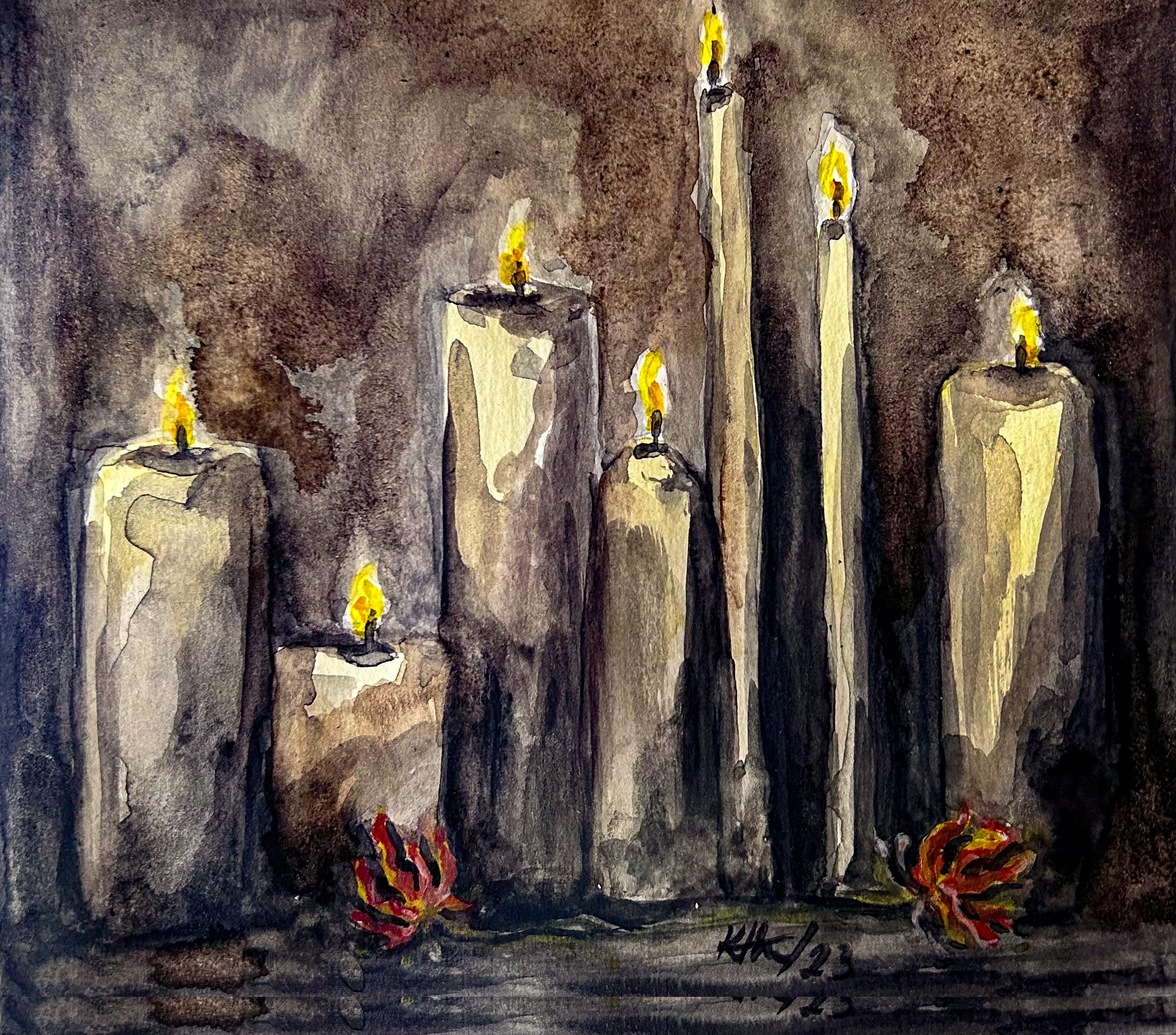Illustration by Keera Ratnam / wavesofcolour
Today tens of thousands of Tamils, from all ages and backgrounds, will gather across the homeland to pay tribute to those who laid down their lives in the armed struggle. The lighting of candles and silent bowing of heads comes despite another year of repeated intimidation and harassment from the Sri Lankan state. Regardless, the nation continues to gather en masse to honour the men and women who fought for it. In paying tribute to their heroes' sacrifice, the nation's resilience and its unbowed resistance to destruction is reaffirmed. It cannot be broken.
This day - Maaveerar Naal – has always posed a problem for the Sri Lankan state. It demonstrates, more than at any other time, how hollow Colombo’s claim of peace on the island under one ‘Sri Lankan’ identity truly is. Instead of simply cowing to the military’s threats not to commemorate fallen LTTE fighters, the Tamil people from Pottuvil to Polikandy are defiantly doing so with the symbols and rituals of their choosing. More than 40 years since the death of the first LTTE cadre, Tamils continue to honour those who picked up arms for their liberation, and in doing so assert their own unique political identity; one that refuses to accept the hegemony of Sinhala supremacism.
Thus, as has now become the norm, the run-up to this day saw Sri Lanka deploy a flurry of repressive measures, from vindictive court orders to the arrest and intimidation of activists, in order to try and prevent commemorations from taking place. One of the most striking moves saw officers take pickaxes to destroy a memorial that itself had been painstakingly rebuilt from the shattered gravestones of fallen LTTE cadres in Batticaloa. On Sunday, police officials even tried to prohibit the use of a flower - the karthigaipoo. The insecurity of the Sri Lankan state was on full display.
The attempted muzzling of the North-East comes despite Colombo having much more pressing concerns to consider in the South. Sri Lanka is still struggling to claw itself out of economic turmoil. Inflation remains rampant, poverty is rife, and the state is dangerously reliant on an IMF bailout that comes with strict conditions. Yet, over the past year, it has continued to focus efforts on the Tamil homeland. Sinhala settlers have been allowed to mutilate the cattle of Tamil farmers, knowing they have the protection of the security forces. Racist Buddhist monks have publicly threatened to slaughter Tamils, knowing they face no consequences. And, despite the economic crisis, the state has continued to pour money it does not have into the maintenance of a massive military and the construction of Buddhist monuments across the Tamil homeland. It is the Tamil people that Sri Lanka still treats as a threat.
Recent weeks alone have demonstrated how volatile the climate remains. Just last week, the Sri Lankan police tortured and murdered a Tamil youth. Earlier, a Tamil judge, who had worked for years within Sri Lanka’s own racist judicial system, fled the island due to threats against him. Meanwhile, military commanders accused of atrocities were appointed as ambassadors and granted the diplomatic protection of the state. All whilst thousands of troops continue to occupy the North-East. This situation is untenable. As history has taught us, and events around the world are currently demonstrating, unchecked oppression will always face resistance. Indeed, it is this same police brutality, murder of Tamil youth, encroachments on the Tamil homeland, and refusal to accept Tamil political demands in the 1950s, 1960s and 1970s that fomented the armed resistance. Those same conditions seem to be in place today.
For Eelam Tamils, there is no desire to simply accept their status in a country where Sinhala majoritarianism is institutionalised, regardless of any apparent international malaise over their plight. It should be clear by now in capitals around the world, that no Sri Lankan leader over the past 15 years, nor in the foreseeable future, has any intention to make any meaningful concessions to the Tamil people. Not a single one dares to even hold those guilty of committing mass atrocities accountable. As we have argued before, only concerted global pressure can do that. But whilst international action on these issues over the years remains glacial at best, and complicit at worst, the Tamil people remain remarkably determined in their goals; justice for the genocide and self-determination for the Eelam Tamil nation.
This unyielding spirit is marked not only today. It is found every day by the protesting farmers who continue to resist Sri Lanka’s military and push to claim back their land. It is carried every week by the families of the disappeared who will not cease until they uncover the truth about their loved ones. It is shown every year by every man, woman, and child who despite the intimidation and harassment, chooses to remember their heroes and honour this radical heritage of resistance. As the volunteers in Batticaloa who arrived to reconstruct the memorial yet again this week demonstrated, even as the Sri Lankan state attempts to destroy over and over again, the Tamil people will continue rebuilding and continue resisting.
We need your support
Sri Lanka is one of the most dangerous places in the world to be a journalist. Tamil journalists are particularly at threat, with at least 41 media workers known to have been killed by the Sri Lankan state or its paramilitaries during and after the armed conflict.
Despite the risks, our team on the ground remain committed to providing detailed and accurate reporting of developments in the Tamil homeland, across the island and around the world, as well as providing expert analysis and insight from the Tamil point of view
We need your support in keeping our journalism going. Support our work today.
For more ways to donate visit https://donate.tamilguardian.com.


